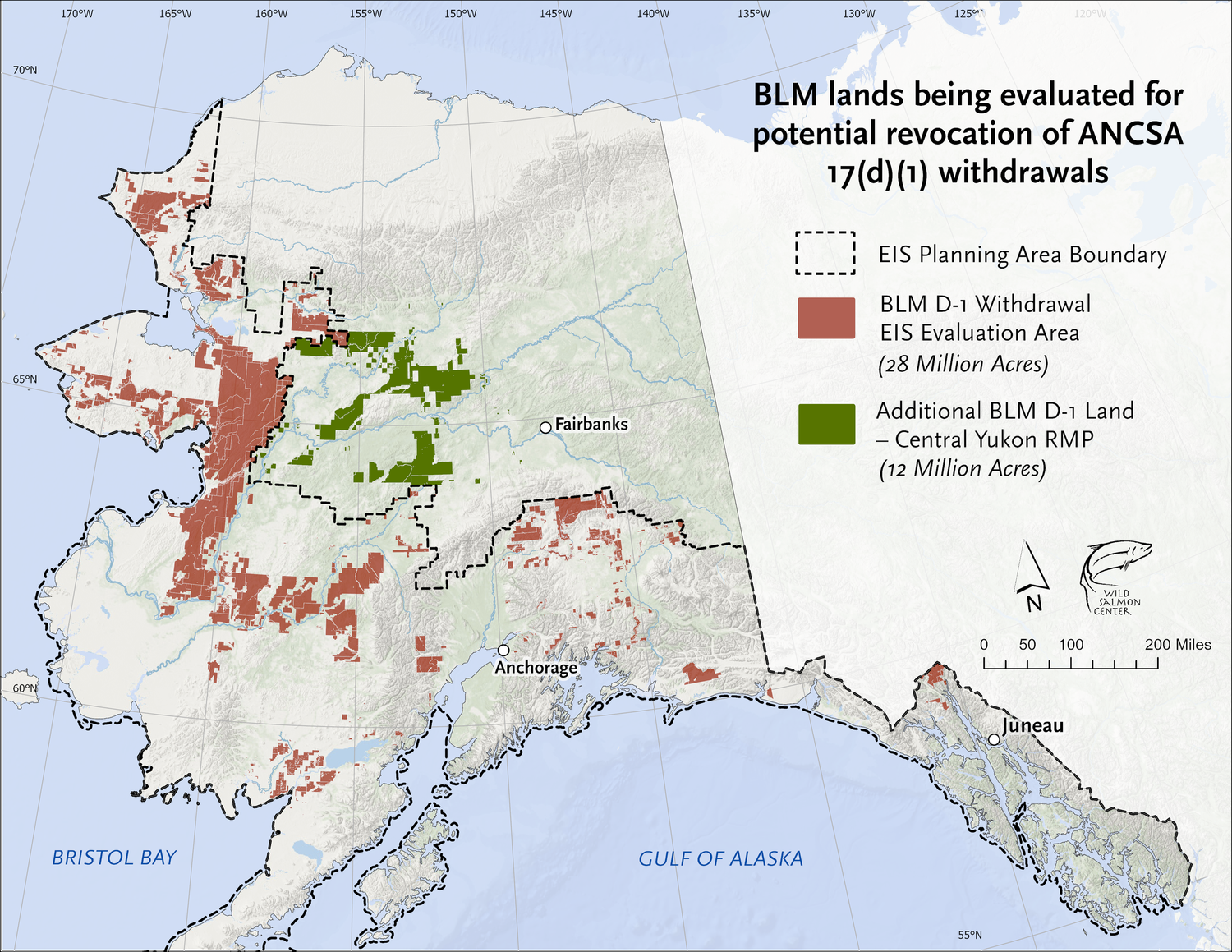The fate of 28 million acres of public lands in Alaska lies in the hands of the federal Bureau of Land Management (BLM) and they want to hear from you. The BLM released a Draft Environmental Impact Statement (DEIS) to consider the impacts of opening public lands to private mining and oil and gas extraction. Tribes, grassroots organizations, outfitters, and other stakeholders are coming together to inform the public about the significance of these lands and encourage active participation during a vital comment period.

Image sourced from https://www.alaskalands.org
Alaska’s public lands encompass some of the largest intact landscapes left in the country. The 28 million acres in question provide habitat for three major caribou herds, diverse migratory birds, and all five Pacific salmon species; they serve as crucial corridors for migratory connectivity across the state. This connectivity is paramount, enabling fish and game species to adapt amid environmental challenges like heat waves and droughts. Preserving these landscapes goes beyond safeguarding individual species; it ensures the interconnected health and resilience of Alaska’s ecosystems.
For dozens of tribes the primary concern revolves around safeguarding subsistence resources. In an Oct. 9, 2023 letter to U.S. Secretary of Interior Deb Haaland, 78 tribes underscored the pivotal role of BLM-managed lands in sustaining essential subsistence resources. These lands serve as a primary source of sustenance for thousands of Athabaskan, Aleut, Denaʼina, Inupiat, Yup’ik, and Tlingit peoples, constituting over 80% of the food consumed by Alaska Native communities residing off the road system. For many Alaska Natives gathering resources directly from the land is not just a choice but a way of life and a means of preserving cultural practices.
These lands are currently safeguarded under the Alaska Native Claims Settlement Act (ANCSA) public land orders, known as “D-1 lands.” During the Trump administration, former Secretary of the Interior David Bernhardt revoked these protections, opening over 11.2 million acres to oil, gas, mining, and corporate interests without sufficient public input.
While the current situation is disheartening, the process this time around is different, as the Biden administration is actively seeking input from the public before making a final decision.
Our partner and grantee, SalmonState is actively raising awareness and collaborating with tribal coalitions, councils, and other grassroots advocacy groups. They have created an easy-to-use toolkit to help the public be better informed and provide impactful feedback. Recognizing the importance of the issue and the vital role of advocacy, the Alaska Conservation Foundation (ACF) proudly supported SalmonState with two grants totaling $25,000 to support their BLM D-1 lands work.
The deadline for submitting comments is February 14, 2024. This is an important time to provide input to the Biden administration and encourage them to consider maintaining protections for the 28 million acres. Your comments during this period can contribute to the decision-making process.


